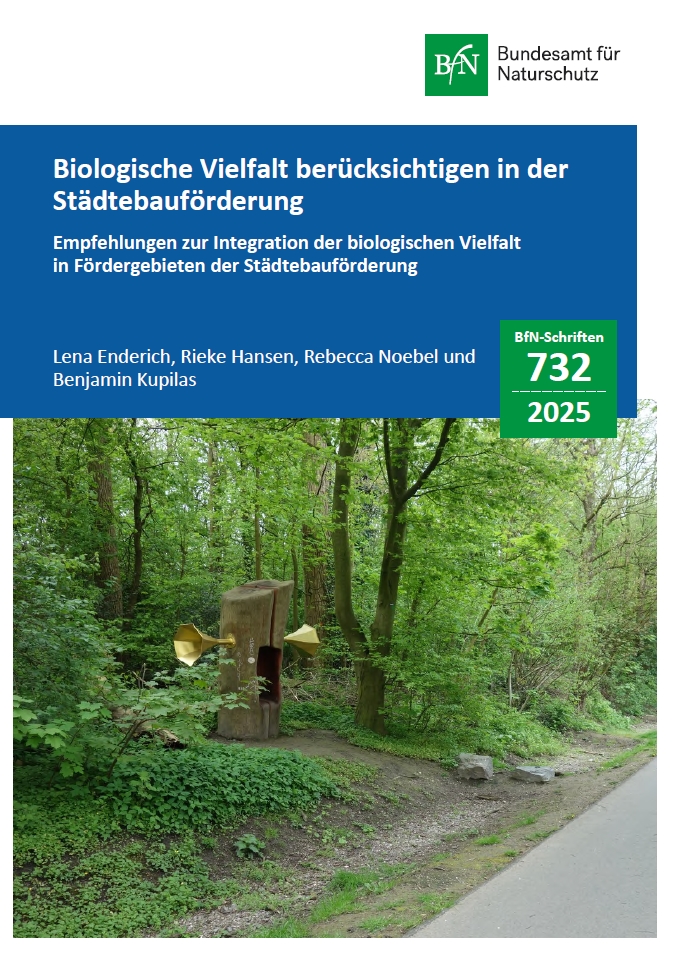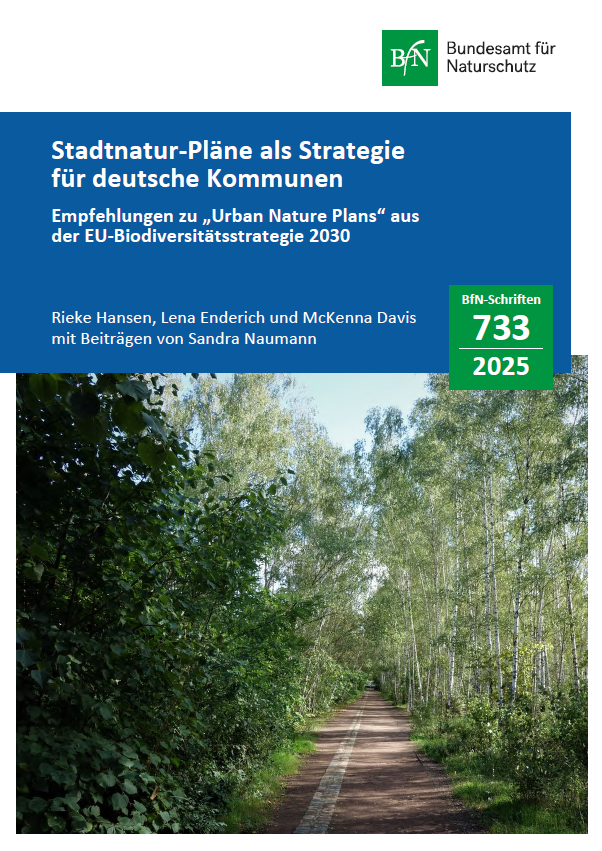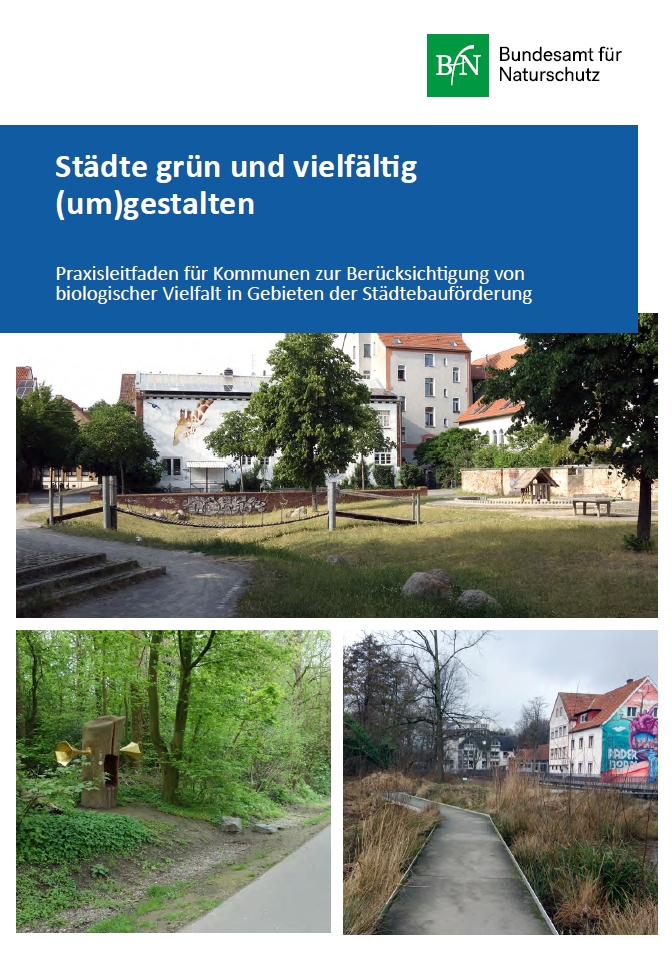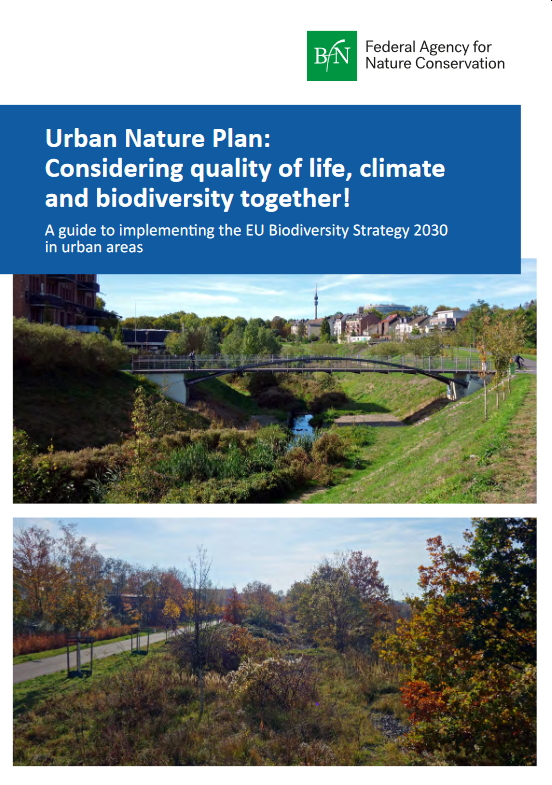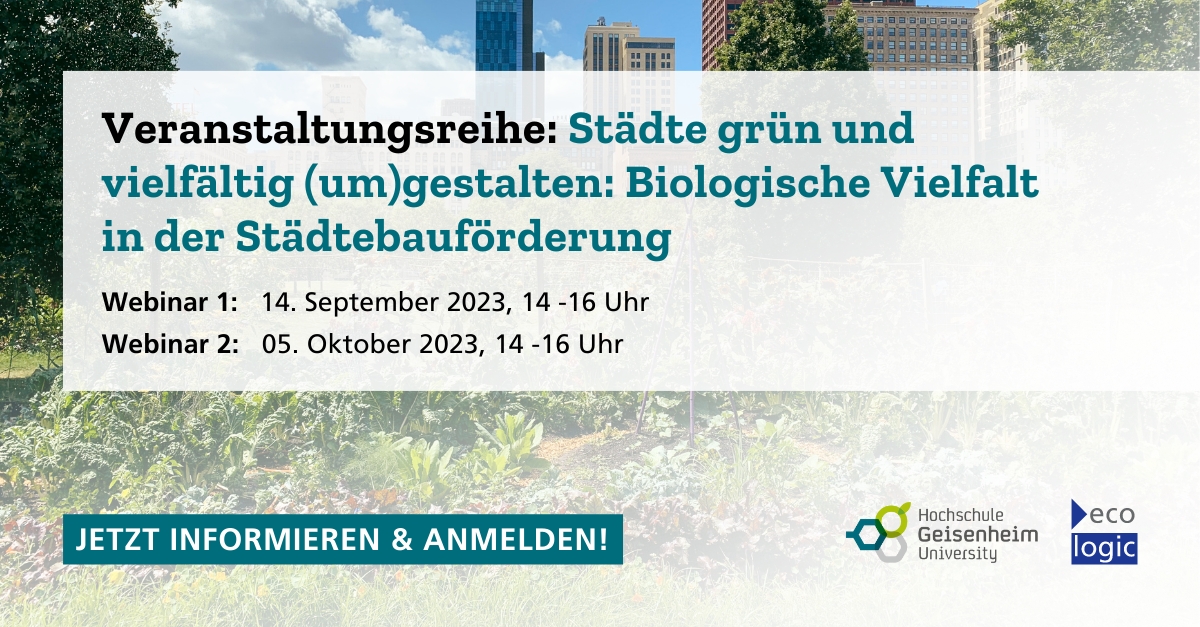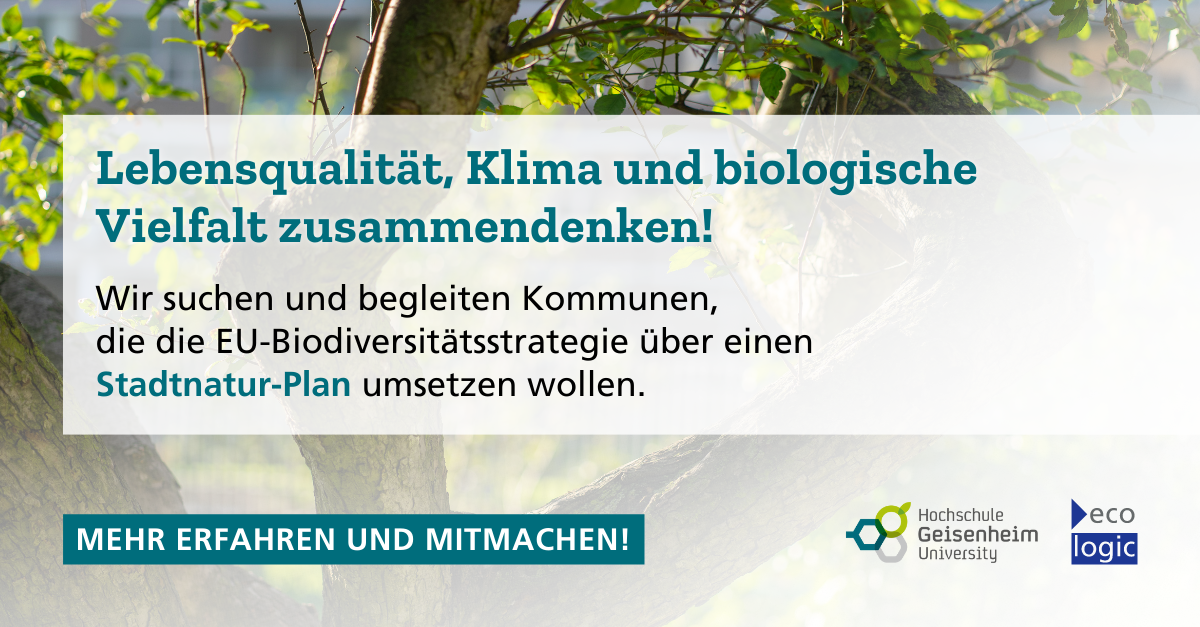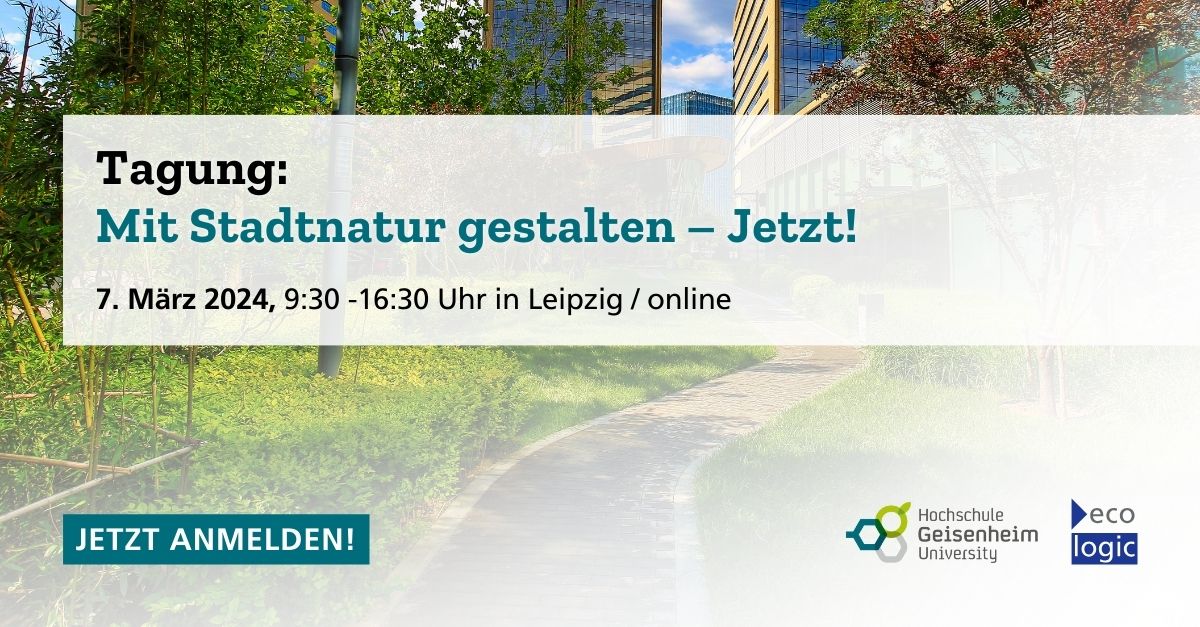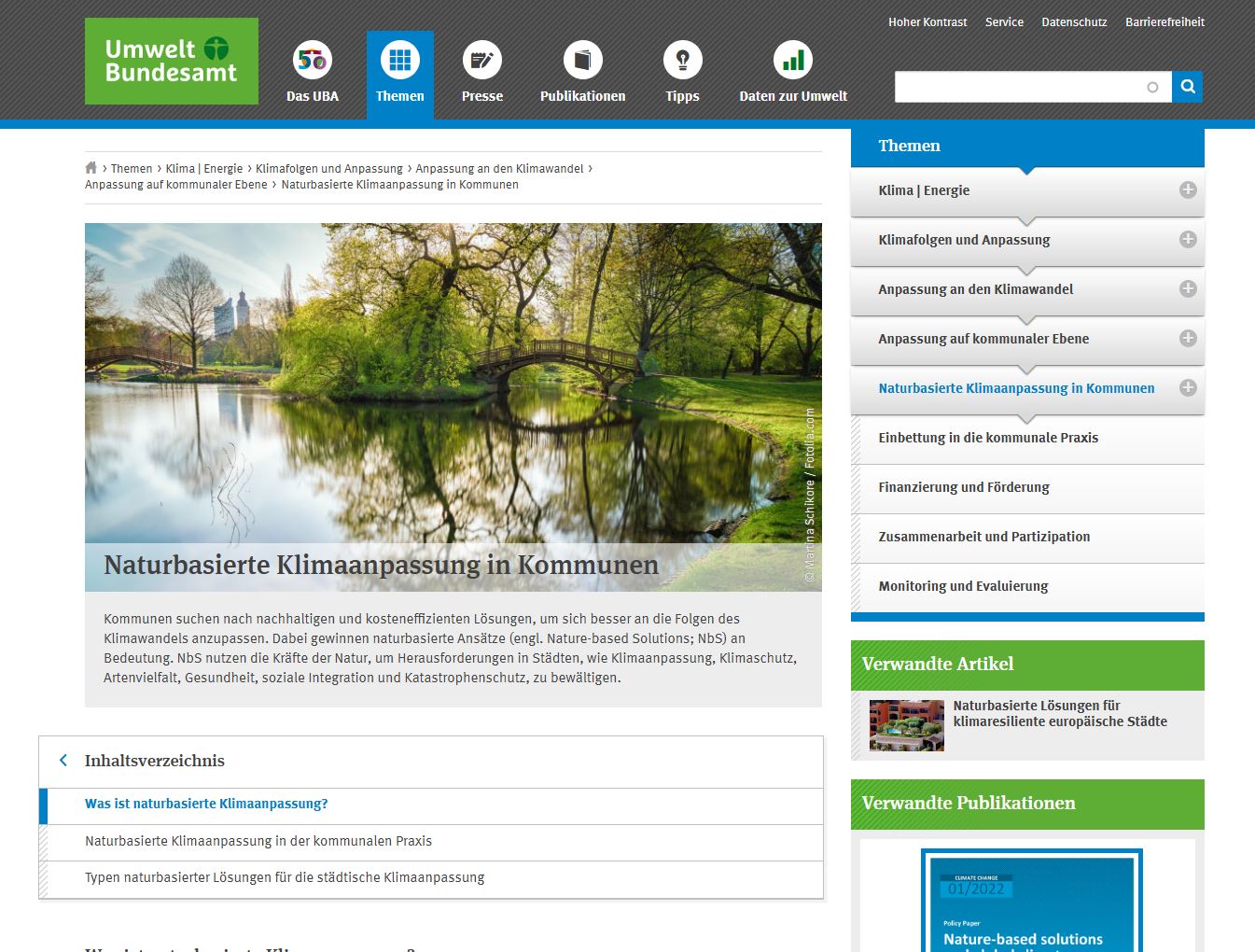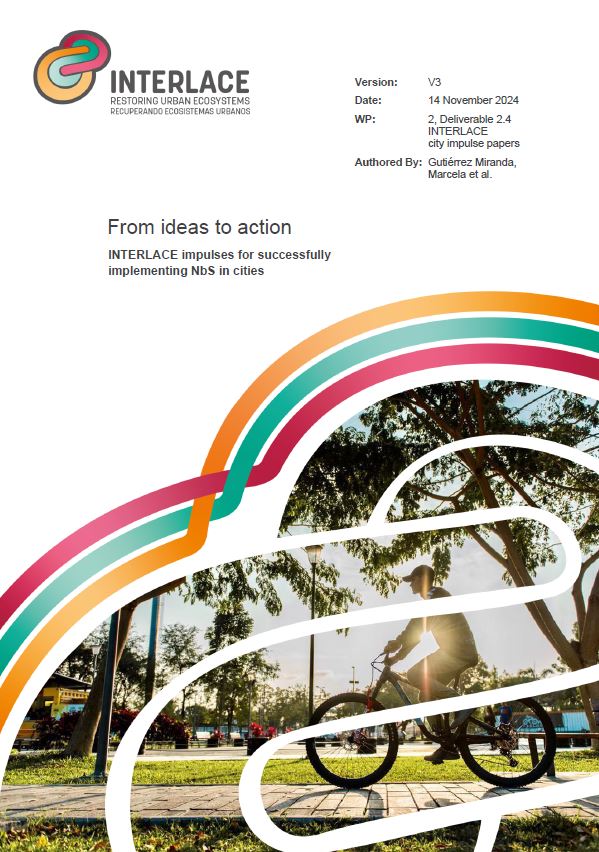Biologische Vielfalt berücksichtigen in der Städtebauförderung
Empfehlungen zur Integration der biologischen Vielfalt in Fördergebieten der Städtebauförderung
- Publication
- Citation
Bundesamt für Naturschutz (ed.) (2025): Biologische Vielfalt berücksichtigen in der Städtebauförderung. Empfehlungen zur Integration der biologischen Vielfalt in Fördergebieten der Städtebauförderung. Bonn.
This publication examines how municipalities can strategically use urban development funding to conserve and promote biodiversity in cities. As a project partner of the German Federal Agency for Nature Conservation (BfN) in the "BioViBeS – Incorporating Biodiversity into Urban Development Funding" research project, the Ecologic Institute played a key role in analyzing best-practice examples and deriving practical action fields and recommendations.
Biodiversity as a Key to Sustainable Urban Development
Integrated urban planning offers an ideal framework to interlink urban green spaces, climate adaptation, and biodiversity. Studies show that urban habitats – owing to their structural variety – are often richer in species than surrounding areas, yet they require special care and connectivity. Only a holistic understanding of "urban nature" – from parks and green roofs to microhabitats – can safeguard their resilience to climate stress and fragmentation.
Action Fields for Practice
From the analysis of 52 integrated urban development concepts and expert interviews, three central action fields were identified:
- Urban Green Measures: Creation of new green spaces (e.g., parks, stepping-stone habitats), enhancement of existing areas (e.g., reduced maintenance intensity, de-sealing), the networking of open spaces (green corridors), and the restoration of near-natural structures.
- Building-Related Measures: Green roofs and façades, as well as nesting aids ("promoting urban species") to establish additional habitats directly on buildings.
- Planning & Processes: Development of binding guidelines (e.g., biodiversity directives), strengthened interdisciplinary collaboration (between parks, urban planning, and environmental departments), and early public participation and communication to foster acceptance and local engagement.
Leveraging Synergies with Climate Protection and Quality of Life
Since 2020, new funding criteria explicitly require climate protection and adaptation measures – and list "enhancing biodiversity" as an eligible measure. Municipalities benefit from viewing biodiversity not as an isolated topic but as an integral part of climate-resilient green infrastructure. For example, sponge city and nature-based solution approaches can manage stormwater while providing habitats; at the same time, urban greenery and shade-giving trees improve quality of life in densely built neighborhoods.
Recommendations for Federal and State Governments
To sustain the momentum generated by the "Future Urban Green" programme, federal and state authorities should clearly embed biodiversity objectives in their funding guidelines and illustrate best practices in accompanying handbooks. The authors specifically recommend:
- Clarify Funding Criteria: Integrate biodiversity criteria into programme texts.
- Provide Framework Information: Develop unified terminology and practical guidelines for municipalities.
- Ensure Maintenance and Monitoring: Establish longer funding periods for maintenance plans and evaluations.
- Strengthen Capacities: Promote training for specialists and inter-municipal networks (e.g., "Municipalities for Biodiversity").
